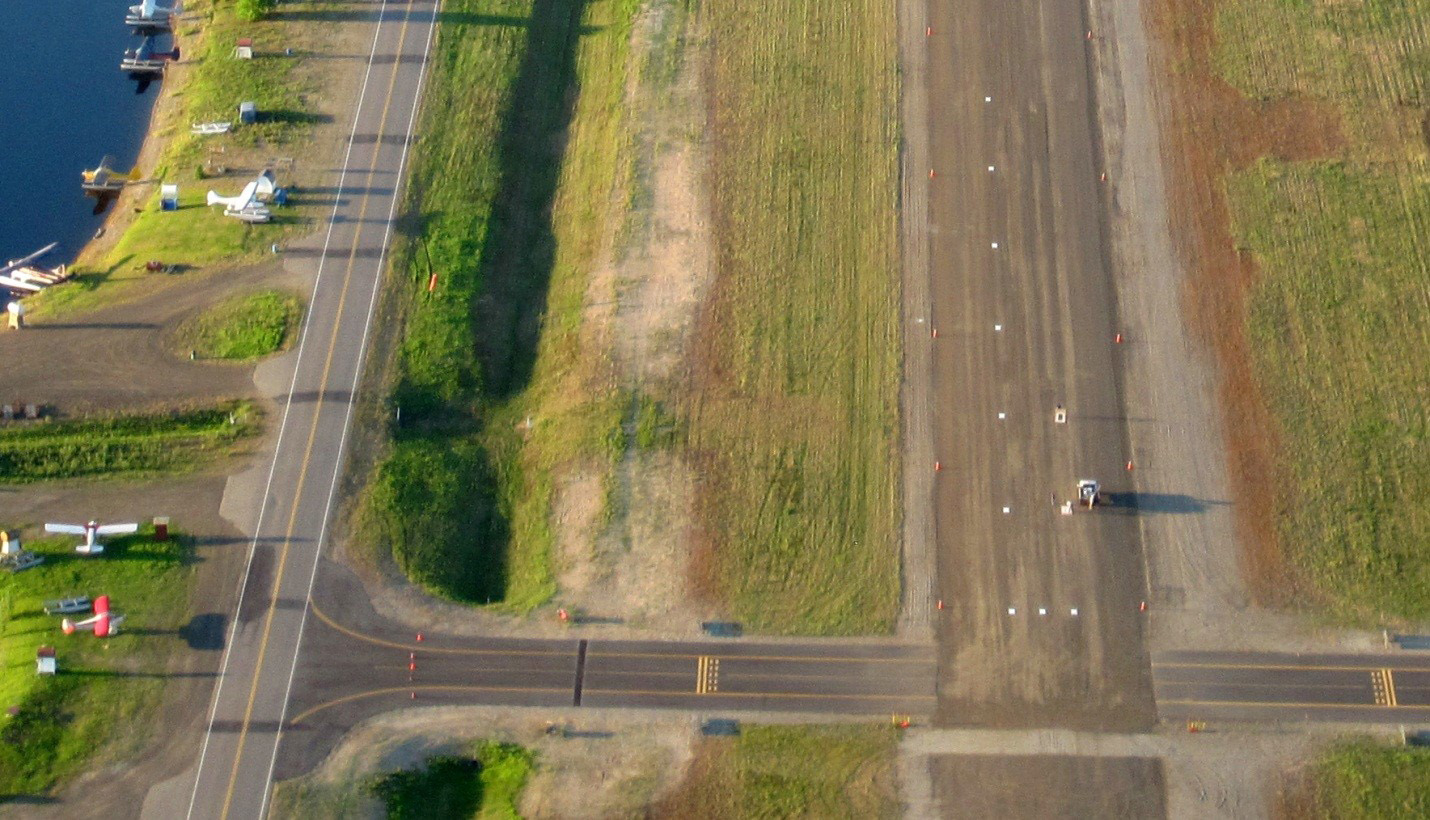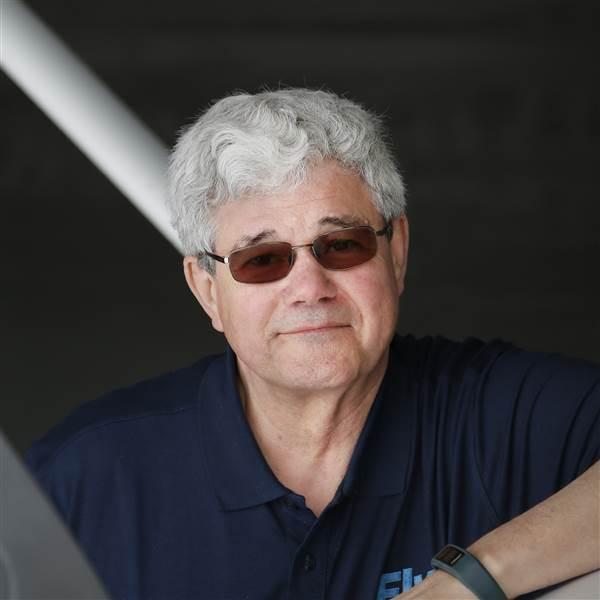Short practice runways sharpen skills
A small crew of volunteers recently went on to the 2,900-foot gravel runway at Fairbanks International Airport in Alaska to mark a 25-foot-wide by 800-foot-long practice runway or “Super Cub strip” on either end of the longer runway. This will provide pilots with a place to practice their short-field takeoff and landing skills before heading out to more remote off-field landing areas.
Why create a practice runway?
While not uniquely an Alaskan activity, landing off-field is certainly very common here. Gravel bars, hilltops, beaches, lakes, rivers, glaciers, and other surfaces provide what is often the only efficient way to gain access to large portions of the state.
Precise control of the airplane includes managing the airspeed, maintaining directional control, and perfecting the ability to touch down at a pre-determined point. By definition, an off-field operation means you are on your own to size up the approach, and the landing and takeoff surface—the height of surrounding obstacles, appropriateness of the over-run areas, how soft the surface is, how big those rocks are, which direction the wind or other elements favor, etc. The decision-making skills include combining factors such as weather, runway conditions, load in your aircraft, and your physical condition to recognize when to go ahead and land—or not.
For the purpose of this article, we will focus just on the first skill—precise control of the airplane.
How many feet does it take to get stopped?
Most of us learned to fly at an airport built to meet FAA design standards. This means not only is the runway probably at least 75 feet wide, and more than 3,000 feet long, but it also has runway safety areas at both ends and doesn’t have obstacles within certain distances of the runway—from the side as well as in the approach and departure paths. In fact, at public-use airports, if there are obstacles within defined distances, they will be noted in the chart supplement, to put the pilot on notice that non-standard conditions exist. None of these safeguards are present for off-field operations.
I distinctly remember as a student pilot at Fairbanks International Airport feeling pretty proud that I could put my Cherokee Warrior trainer down on that 75-foot-wide runway—every time! After all, that was the “small” GA runway. If I landed on the air carrier side of the airport, it was twice as wide—and over 10,000 feet long. Piece of cake!
Then my instructor took me over to Phillips Field, a nearby GA airport at the time (now, sadly, part of a local highway). On the west end of the otherwise gravel 3,300-foot runway, there was a short section of pavement. If I recall correctly, it was 20 wide and 820 feet long. How was I supposed to hit that? Initially, I felt pretty good just to make my wheels even touch down on the pavement, before rolling out on the longer gravel section of the runway. A few years later, with a few hundred hours of flight experience under my belt, I could hit the pavement reliably. And sometimes even get stopped. After purchasing my first airplane, I was based at Phillips Field, and got to “practice” with every landing. The value of Phillips Field was that it provided a narrow, short landing surface, where you knew exactly how well you were doing—something landing on a bigger runway doesn’t provide.

A place to practice
In 2010, an informal group of FAA, State of Alaska Department of Transportation (DOT), and industry representatives collaborated on creating a place to practice landing and takeoff skills. Based on the experience the FAA and DOT had with runway construction projects, they realized that one could spray paint on a gravel surface as a temporary marking—and it would last for a while, depending on use. This technique is commonly used in Alaska when runways are reduced to half-width operations during construction projects, providing the pilots with “positive visual guidance” on where to land, as opposed to the classic “X” on the runway that tells them where not to land. Based on this experience, a proposed design was drawn and evaluated by FAA technical staff, leading to a proposed design for a short-field practice runway.
The following summer, two runways were marked. The first was the gravel ski strip at Warren "Bud" Woods Palmer Municipal Airport, followed by the ski strip at Fairbanks International Airport. The successful result was an area marked with several two-by-four-foot rectangles of white paint, defining a “practice runway” 25 feet wide and 600 feet long. These patterns were painted on both ends of the runway, offset from the threshold. This provided pilots with a place where they could tell if they had touched down in time and were stopped before the last marker disappeared behind them, and if they managed to stay within the 25-foot width of the landing zone.
While this doesn’t help one evaluate the surface condition or approaches to a true bush strip, it is a good way to sharpen your skills and hone precise control of your aircraft—in an environment where if you are off by a little bit the only thing that should get damaged is your ego.
After successful operations during the first year, the FAA approved similar marking designs for six airports across Alaska at Goose Bay, Fairbanks, Nenana, Palmer, Soldotna, and Wasilla. In the dozen years since this project started, not all these airports have been marked every year.
Who paints the runway?
I am so glad you asked! This is a collaborative effort. If the airport is supported with federal funding, the FAA approves the marking pattern for the airport, the airport owner provides the supervision, and normally a group of volunteers does the actual painting. It is a great opportunity for a local airport group or aviation organization and doesn’t have to significantly add to the cost of operating the airport. In Fairbanks, the General Aviation Association (a local airport group), has worked with the airport staff on this project annually since 2010. Typically painting happens in the spring after the runway dries out, (and the airport maintenance staff grades and compacts the surface). Depending on use, a mid-summer touch-up job may be needed to re-establish the marks. If you don’t have a practice runway near you and would like to consider establishing one at your local airport, talk to the airport manager, as FAA approval is required for public-use community airports. The Fairbanks group has developed a how-to guide that outlines planning and conducting a runway marking project.
Whether you plan to fly off-field or not, doing some touch and goes on one of these “short-field practice runways” is a great way to develop your skills, and to see if you’re as sharp as you think you are.




